text document
Type of resources
Topics
Keywords
Contact for the resource
Provided by
Years
Formats
Representation types
Update frequencies
-
Homogenised catalogues of microseismicity and pumping data from the PNR-1z and PNR-2 injection wells
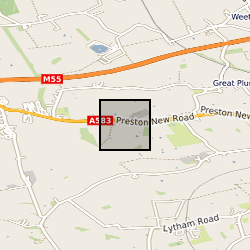
Microseismicity catalogues and fluid injection rate data recorded at the Preston New Road (Lancashire, UK) unconventional shale gas site during and after hydraulic fracturing of the PNR-1z and PNR-2 wells. Homogenised seismic catalogues include events recorded by the combined downhole and surface networks operated by the operator (Cuadrilla Resources Ltd.) and the British Geological Survey. Injection rate values are as initially reported by Cuadrilla Resources Ltd. The original datasets were provided by the UK Oil and Gas Authority (OGA).
-
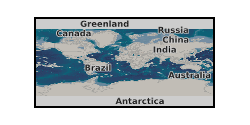
Cyclic loading stress-strain data in polycrystalline antigorite serpentinite, at various confining pressures and temperatures. This dataset is used and fully described/interpreted in the paper: David, E.C., N. Brantut, and G. Hirth, Sliding crack model for non-linearity and hysteresis in the triaxial stress-strain curve of rock, and application to antigorite deformation, submitted to J. Geophys. Res. Overview Rock type Vermont antigorite-rich (>95%) serpentinite. See submitted paper for details. The sample is isotropic. Apparatus Oil-medium triaxial apparatus (Rock Physics Ensemble, University College London). For description, see David el al. (2018), Absence of stress-induced anisotropy during brittle deformation in antigorite serpentinite, J. Geophys. Res., 123, 10616-10644. Griggs-type solid medium apparatus (Brown University). For description, see David, E.C., N. Brantut, and G. Hirth, Sliding crack model for non-linearity and hysteresis in the triaxial stress-strain curve of rock, and application to antigorite deformation, submitted to J. Geophys. Res., and references therein. Files description 1-existing data from David et al., JGR, 2018: The text file "Vermont-antigorite-roomT-150MPa-stress-strain-cyclicloading-UCLtriax" gives the axial stress (in direction 1, see submitted paper) and the axial strain (in percent, in direction 1, see submitted paper), at room temperature and 150 MPa confining pressure, in the oil triaxial apparatus at UCL. The mechanical data (stress, strain) have been corrected from internal friction and machine stiffness, respectively. The data are from David el al. (2018), Absence of stress-induced anisotropy during brittle deformation in antigorite serpentinite, J. Geophys. Res., 123, 10616-10644. 2-new data: The text file "Vermont-antigorite-roomT-1000MPa-stress-strain-cyclicloading-Griggsapparatus" gives the axial stress (in direction 1, see submitted paper) and the axial strain (in percent, in direction 1, see submitted paper), at room temperature and 1000 MPa confining pressure, in Griggs solid medium apparatus at Brown University. The mechanical data (stress, strain) have been corrected from internal friction and machine stiffness, respectively. The text file "Vermont-antigorite-400C-1000MPa-stress-strain-cyclicloading-Griggsapparatus" is the equivalent of the file described just above at a temperature of 400C. The text file "Vermont-antigorite-500C-1000MPa-stress-strain-cyclicloading-Griggsapparatus" is the equivalent of the file described just above at a temperature of 500C.
-
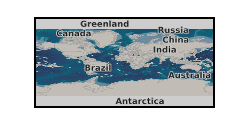
This dataset contains extremal forecast of latitutude (lat), longitude (lon) and intensity of the geomagnetic dipole between 2019 and 2119. The geomagnetic dipole is evolved by a fluid flow at the core-mantle boundary that maximises the rate-of-change of the dipole latitude. The forecast is calculated from the year 2019 assuming that the geomagnetic field is described by the CHAOS-7 dataset. The optimisation procedure is described in https://doi.org/10.3390/geosciences11080318
-
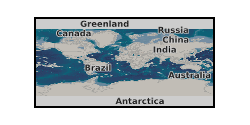
Data recorded during triaxial rock deformation experiments of Westerly granite in the presence of pressurised pore fluids (water). Data consists of mechanical data (load, displacement, confining pressure) and pore pressure data (up- and downstream pore pressure, upstream intensifier volume, four pore pressure transducers mounted on sample). Contains all data necessary to evaluate the results presented in the paper entitled: 'Dilatancy stabilises shear failure in rock' by Aben and Brantut, submitted to Earth and Planetary Science letters, and available at arXiv (arXiv:2101.10036).
-
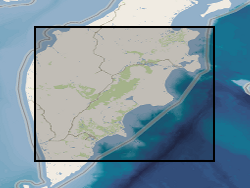
This dataset contains bulk rock, glass, melt inclusion and host phenocryst geochemical compositions for materials from Tolbachik volcanic field, Kamchatka, Russia, together with supporting petrographic information. Sampling localities are provided together with the bulk rock compositional data. Samples were acquired between 2016 and 2019 and the data were collected between 2016 and 2020 using secondary electron microscopy, electron microprobe analysis, secondary ion mass spectrometry, laser ablation ICP-MS, X-ray fluorescence and solution ICP-MS, and multi-collector ICP-MS methods. Most of the data are included in a manuscript (Iveson et al.) to be submitted to Journal of Petrology in March 2022.
-
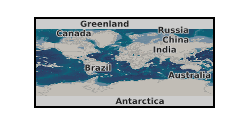
These data represent a series of analyses exploring the seismic behaviours of low-cohesion volcanic sediments – in this case the Neapolitan Yellow Tuff - under varying strain rates. The data include deformation logs from triaxial compression experiments, and the accompanying 12-channel acoustic emission recordings at 10 MHz. These are paired with X-Ray Computed Tomography images of one of the cores from both before and after deformation, to examine damage behaviour. These data include: Deformation logs captured from the triaxial press Acoustic emission event data Processed acoustic emission sonograms for selected events Matlab code for processing of sonograms Matlab code for statistical analysis of the acoustic emission data Before and after X-Ray Computed tomography data for a core which underwent 2% strain at a rate of 4x10-6 s-1. These data relate to Rowley et al - Deformation controlled Long-Period seismicity in low cohesion volcanic sediments https://doi.org/10.31223/osf.io/7rkzv
-
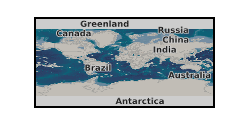
This dataset (1.5 GB) comprises SO2 emission data (SO2 camera and DOAS) of parts of the active 2013 phase from Colima, as well as Scanning electron microscope (SEM) images and microprobe data of the collected ash from explosions and lava and dome rock. These data were used in the following paper: Cassidy, M., Cole, P.D., Hicks, K.E., Varley, N.R., Peters, N., Lerner, A. 'Rapid and slow: Varying ascent rates as a mechanism for Vulcanian explosions' Earth and Planetary Science Letters. 420: 73-84. doi:10.1016/j.epsl.2015.03.025
 BGS Data Catalogue
BGS Data Catalogue